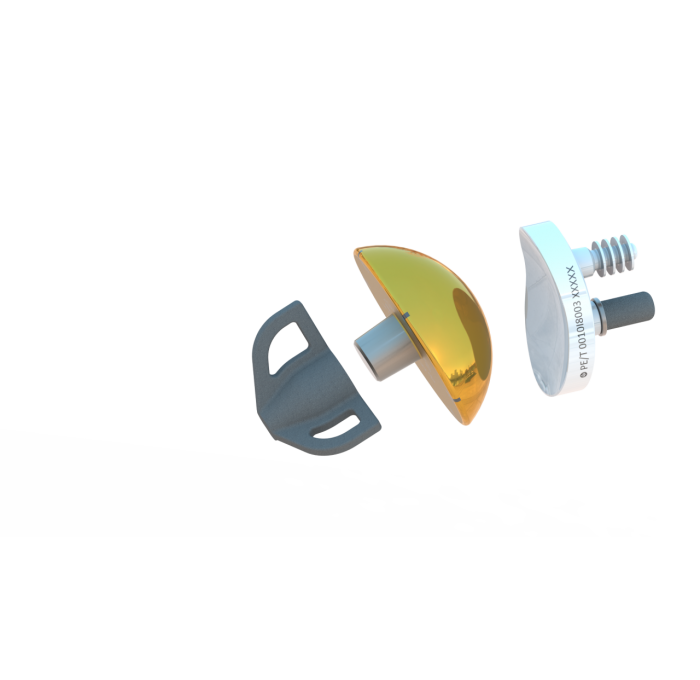Clinical Results and CT Analysis of ISA Stemless at a Minimum Follow-up of 2 Years
Introduction: The utilization of stemless anatomic total shoulder arthroplasty is on the rise. Epiphyseal fixation leads to radiological bone remodeling, which has been reported to exceed 40% in certain studies series. The aim of this study was to present the clinical and radiological outcomes of a stemless implant with asymmetric central epiphyseal fixation at an average follow-up of 31 months.
Materials: This retrospective multicenter study examined prospective data of patients undergoing total anatomic arthroplasty with ISA Stemless implant and followed up at least 2 years. Clinical assessment included preoperative and final follow-up measurements of active range of motion (ROM), Constant score, and Subjective Shoulder Value (SSV). Anatomical epiphyseal reconstruction and bone remodeling at the 2-year follow-up were assessed by standardized Computed Tomography Scanner (CT scan). Statistical analysis employed unpaired Student's t-test or chi-squared test depending on the variable type, conducted using EasyMedStat software (version 3.22; www.easymedstat.com).
Results: Fifty patients (mean age 68 years, 62% females) were enrolled, with an average follow-up of 31 months (24-44). Primary osteoarthritis (68%) with type A glenoid (78%) was the prevailing indication. The mean Constant score and SSV improved significantly from 38 ± 11 to 76 ± 11 (p<0.001) and from 31% ± 16 to 88% ± 15 (p<0.001) respectively at the last follow-up. Forward elevation, external rotation and internal rotation ROM increased by 39° ± 42, 28° ± 21 and 3,2 ± 2,5 points respectively, surpassing the Minimally Clinically Important Difference (MCID) after total shoulder arthroplasty. No revisions were necessary. CT scans identified 30% osteolysis in the posterior-medial calcar region, devoid of clinical repercussions. No risk factors were associated with bone osteolysis.
Conclusion: At an average follow-up of 31 months, ISA Stemless implant provided favorable clinical results. CT analysis revealed osteolysis-like remodeling in the posterior-medial zone of the calcar (30%), without decline in clinical outcomes and revisions. Long-term follow-up studies are mandated to evaluate whether osteolysis is associated with negative consequences.
Keywords: TSA; anatomical shoulder replacement; bone remodeling; osteolysis; primary osteoarthritis; shoulder prosthesis; stemless.

 Shoulder
Shoulder